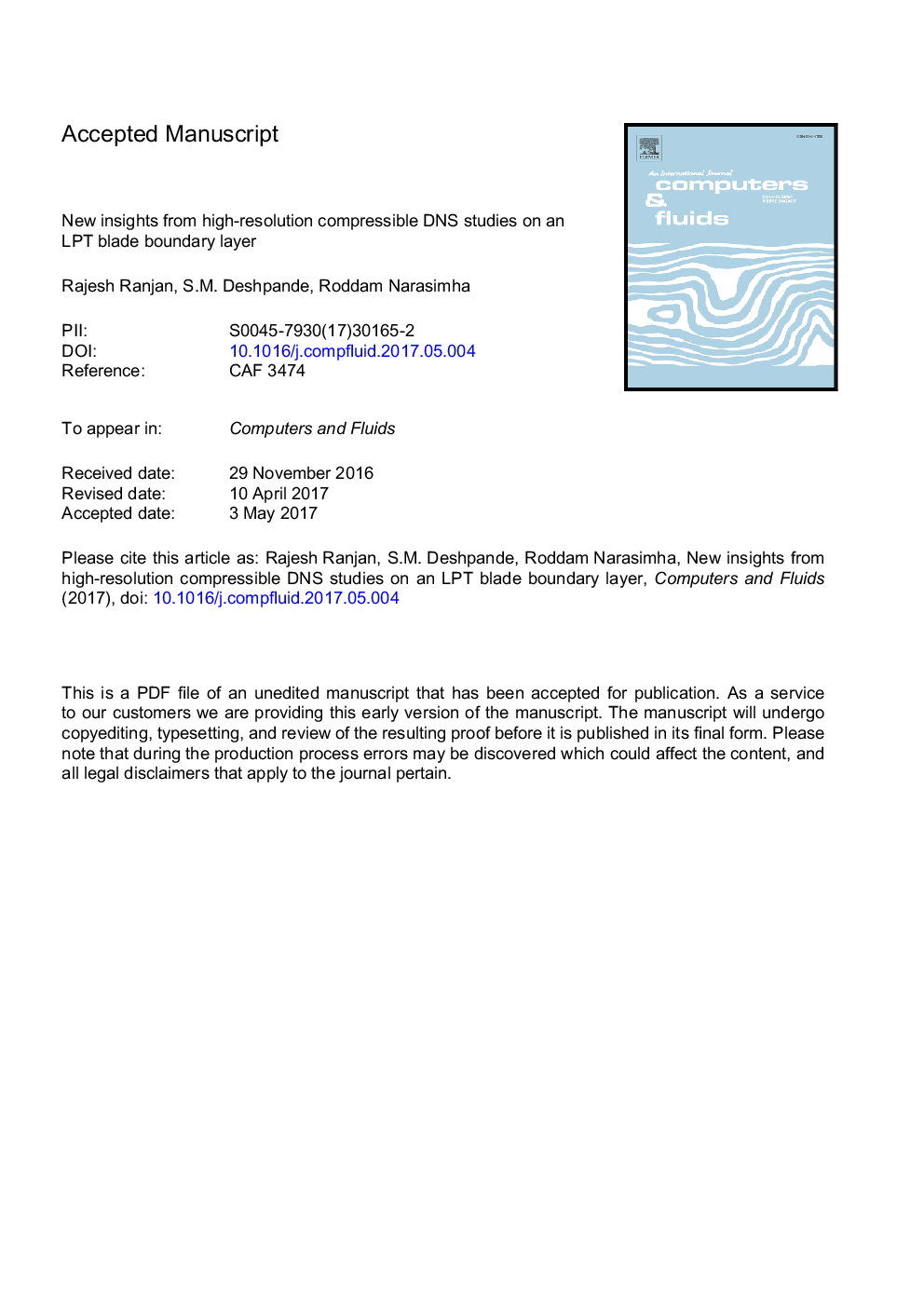| Article ID | Journal | Published Year | Pages | File Type |
|---|---|---|---|---|
| 5011868 | Computers & Fluids | 2017 | 29 Pages |
Abstract
Flow past the well-known low-pressure turbine blade T106A in a cascade is solved using an in-house code (named ANUROOP). This code is developed for solving 3D compressible Navier-Stokes equations and has been validated against Taylor-Green and supersonic turbulent channel flows. In order to ensure that the generally complex behaviour of the boundary layer on a turbine blade is captured with adequate precision, a hybrid grid, with a high-resolution orthogonal boundary layer mesh and hexahedral unstructured elements in the rest of the domain, is used for the simulation. Total grid size (at 161 million) is the largest used to-date for the same blade flow. Simulations are performed at Re=51,831 and angle of incidence α=45.50 without any free-stream turbulence or upstream wakes. The several new findings from the present high-resolution simulations include: (i) elimination of all significant discrepancies between the pressure distributions computed in earlier low-resolution DNS studies and experimental data, (ii) the absence of a separation bubble and transition at or near the leading edge on the suction side, (iii) the occurrence of a 'long' separation bubble at the trailing edge on the suction side, (iv) a demonstration of the inadequacy of classical boundary layer theory to account for the effects of blade surface curvature, and finally (v) an estimate of the curvature upto which the first correction to the boundary layer theory is adequate.
Keywords
Related Topics
Physical Sciences and Engineering
Engineering
Computational Mechanics
Authors
Rajesh Ranjan, S.M. Deshpande, Roddam Narasimha,
